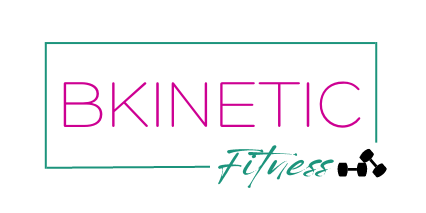So many of those decisions are made by habit and influenced by environmental aspects, like the size of the plate or package or whether we’re eating alone or with others. The good news is, we can relearn better habits and arrange certain aspects of our lifestyles so that it’s much easier to make healthier choices.
It starts with understanding that we are very inaccurate when it comes to estimating the number of calories we consume. We can be off by as much as 20-40%. That’s significant, and no one is immune to this phenomenon (not even registered dieticians) in his studies. And when it comes to estimating how many calories we burn each day, it’s just as bad.
That’s why it can be so valuable to keep a food journal to track your daily intake (at least for a few days). A mere 100 calories over or under our daily maintenance level can equal a 10 pound gain or loss in just one year. Wansink calls this the “mindless margin.” It’s so easy to do, and not a large enough of an amount to notice, until we suddenly notice the few extra pounds around our midsection down the line.
There are a few simple things you can do to fight this that don’t involve counting calories. First, resist eating out of the package. This all but guarantees you’ll eat above and beyond the recommended serving size. Take out what you need and put it in a bowl to eat. This gives you a visual cue to consciously and deliberately decide if you are still hungry and want more.
And how many times have you sat in front of the television with a bag of chips and before you knew it, the bag was almost empty? Distractions put you on eating auto-pilot. The fewer distractions there are, the more in-tune you can be with your body’s hunger and satiety signals.
Another way to “trick” yourself into eating less is to use smaller plates and bowls. Most dish sets sold today include huge bowls and plates, capable of holding oversized portions of food. This encourages you to fill your plate with more than you need or even realize. Then you feel almost obligated to clean your plate. Also, using short glasses instead of tall ones will encourage you to pour less when drinking caloric beverages, whether it’s juice or alcohol.
Another tactic to be on the watch for is the “health halo.” This is the aura of healthfulness placed on certain foods. Think of foods labeled as “Low Fat” or “Natural.” Many times the manufacturer will simply replace the fat in a food with sugar or artificial sweeteners to make sure it still tastes good. Unfortunately, that doesn’t make it any healthier than the original version.
This phenomenon also occurs in the fast food industry. You would think that by offering healthier salad options and posting the nutrition facts right on the menu that more consumers would make better options, but nope. Studies have found that simply having salads on the menu bestows a health halo onto the rest of the menu, leading to an increased purchase of the junkier options. Crazy, huh?
One of my personal pet peeves is when a packaged food proclaims that it is a good source of protein, and you look at the label, and it’s a lousy 5 or 6 grams of protein per serving. Hmmm. I don’t know about you, but 5 grams is not going to put much of a dent in my 115 grams per day protein goal. To me, a good source of protein is one that contains at least 15 grams of protein per serving. Now we’re talking.

Even legitimately healthy foods like avocado and nuts fall into the health halo trap. Although they combine a powerhouse of healthy fats, fiber, and protein, it’s easy to go overboard. Calories still count.
Subway employs the health halo quite well. After watching their commercials, you’d get the idea that you’ll lose weight just by walking through the doors. However, pile on the cheese, dressings, and fatty processed meats, and you have a meal that can rival any other fast food place on the block in fat and calorie content.
Ack! It’s enough to drive you crazy trying to figure out what’s “okay” to eat. I get it. And I know that if it’s not easy for me to see past some of the hype and meaningless terms that food manufacturers use, it can’t be easy for everyone else.
The biggest thing I want you to take away from this article is to just start being more aware of how you’re choosing what to eat, when, and how much.
Whether that includes keeping a food journal for a week or simply trying out one or two of these tips, that’s going to put you on the right track. Don’t stress out about eating perfectly. Just change one thing at a time until it becomes automatic. A healthy lifestyle and fat loss begins with building healthy habits so that it is sustainable and near effortless.
In summary:
1. Avoid eating straight out of the package.
2. Use smaller dishes and glasses.
3. Avoid distractions while eating, like watching television and reading.
4. Be mindful of “health halos” and terms like “all natural,” “organic,” “gluten-free,” “fat free,” and “low fat.”
5. Watch portion sizes of calorie-dense foods (including healthy ones like nuts).
What’s your best tip for eating healthy and making better food choices? Comment over on the B Kinetic Fitness Facebook page and share with the community.



